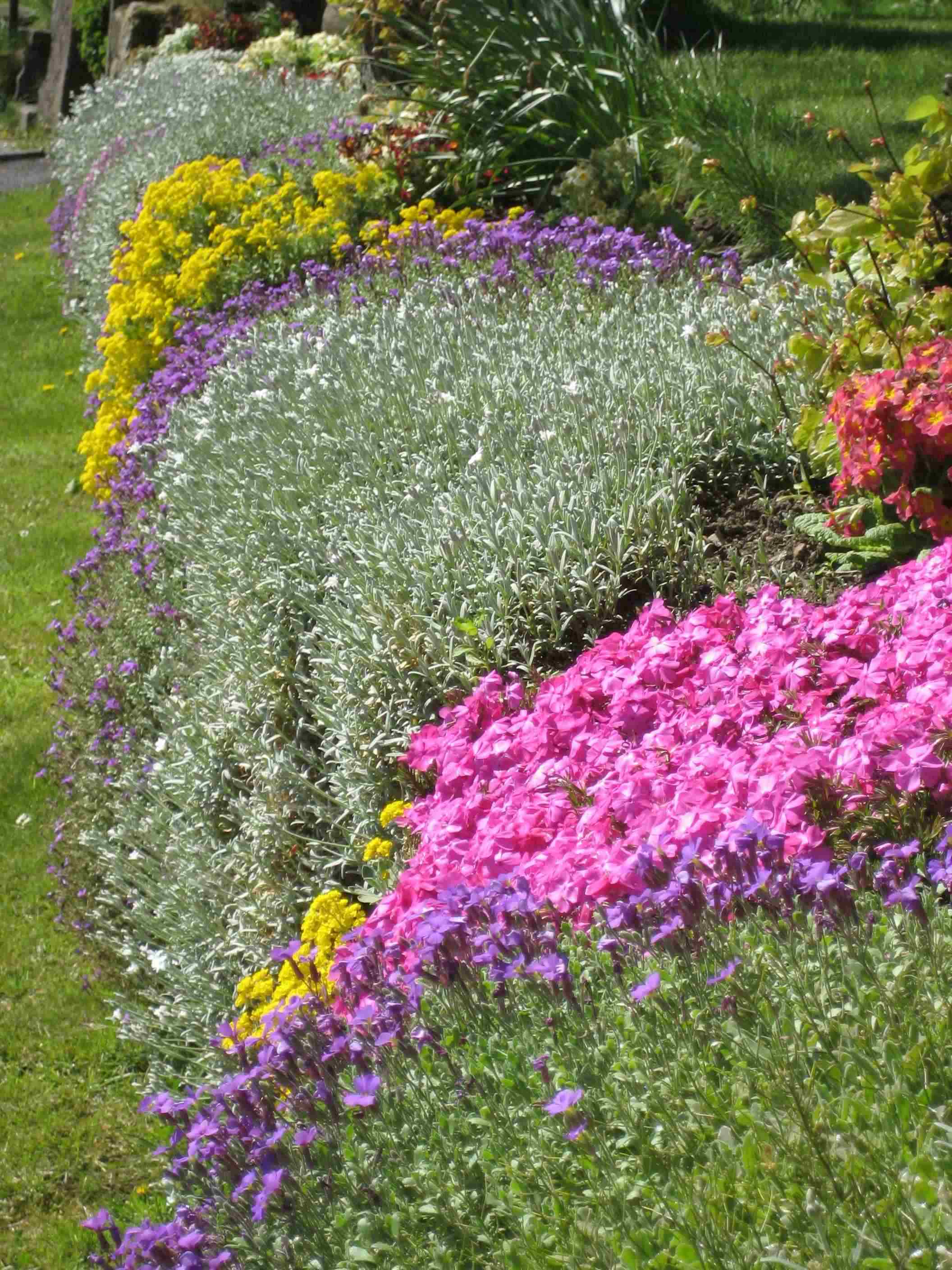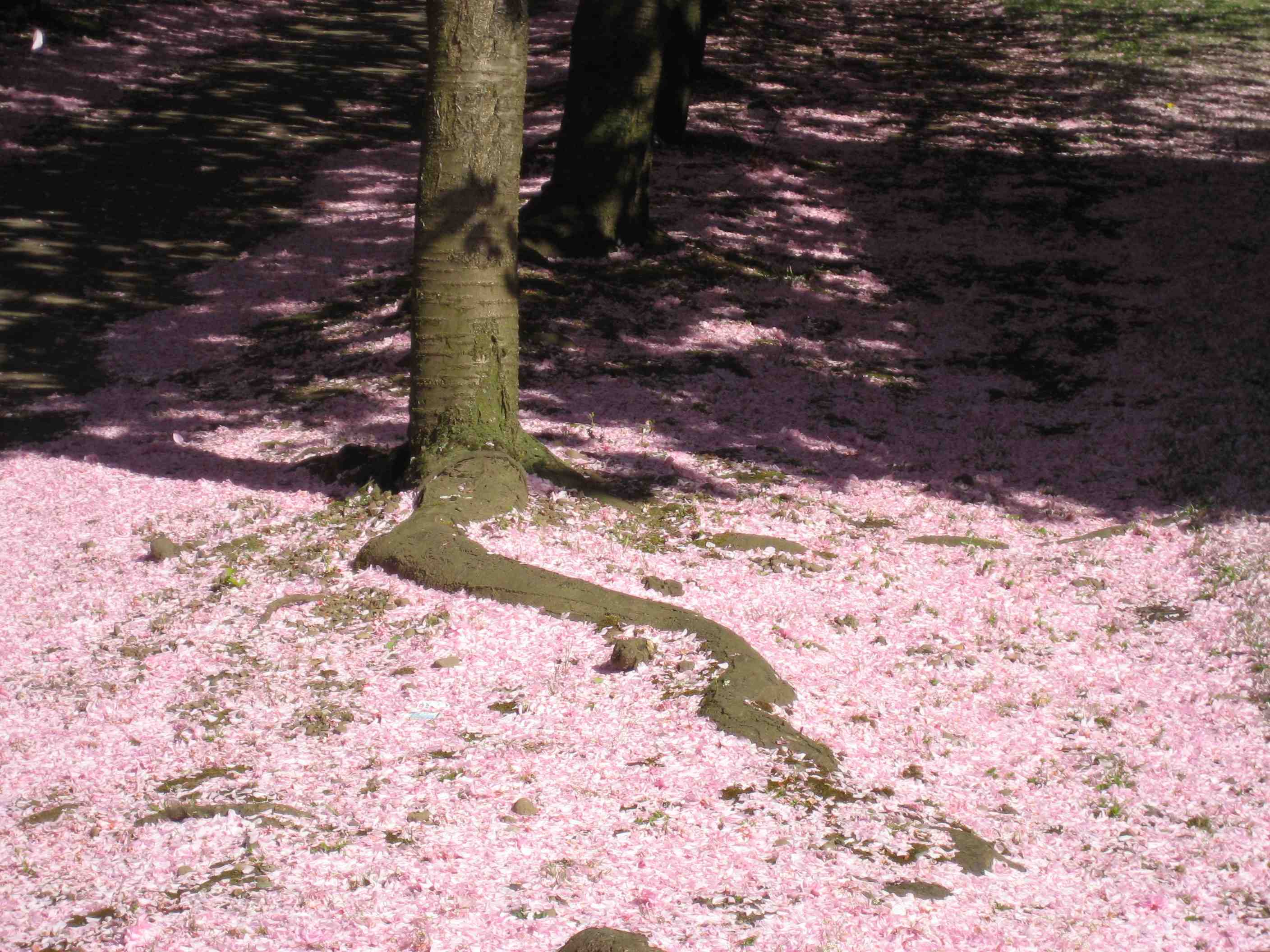| Hike Northbound through
Britain with Daryl May Click for Southbound hike |
|
 |
|
| Days N40 - N44 Central Scotland | |
| Northbound Home Start hiking here English West Country English Midlands North of England Southern Scotland Central Scotland Scottish Highlands Southbound Home |
Monday, April 30, 2007
Time of departure: 8.15 am Time of arrival: 7.45 pm Place departed: Chapelhall, North Lanarkshire Place arrived: Stirling, Stirling Miles: 23.8 Cum miles: 653.3 Percent complete: 70.4  Willy Wallace Hostel,
Stirling ** Willy Wallace Hostel,
Stirling **Cost (for bed only): £12 ($24) |
| Overview of both
hikes Excerpts Statistics What others say Acknowledgments Contact me Copyright Links |
|
 |
|
| Top of page: A wall of flowers near Allandale. Above: Cherry blossom coated the streets of Denny | |
| The
Shawlee Cottage
was beautifully clean, and nicely furnished and plumbed, but it was an
occasion when I paid for and occupied a double room that was really
just adequate for a single person without a suitcase. Still,
Sandy and Cathy were very welcoming, and Cathy cooked the sausages the
way I like them, which is cooked. Although my route went close to the commercial and industrial center of Cumbernauld, I had chiseled out a southern bypass of Cumbernauld town itself, mainly through farmland. Thus I re-entered civilization in Allandale, a few miles southwest of my intended end-point of Denny. Between Allandale and Denny, I passed a beautiful garden, with a rock wall that was a riot of colorful flowers, which I photographed. If the owner of that home in Longcroft wants a copy, I hope they’ll contact me. Their handiwork brought me pleasure as I seemed to come to the end of my day. You've heard it before, but there was nowhere to stay in Denny that would take a single, except the Donner Inn, which offered overpriced smoky rooms that repulsed me. It was a repulsion that added seven miles to my day - which meant that the end of the day was still three hours further. I kept walking - and walking, because everywhere on the route was either full, or taking Monday off, or was too far to the side to risk detouring and finding no availability. Signs to accommodation off the main road should include a phone number or the owners risk losing the hiking and biking trade. Of course, that may be their intention. Though several miles beyond Denny, Stirling was the only reliable destination with an available bed. I called the Scottish Youth Hostel Association, who told me there were at least a hundred empty beds at their Stirling hostel. That information in itself erased all accommodation worries. Youth hostels are open for check-in until 11 pm, whereas anywhere else tends to get itchy if you are later than about 6 pm, because they fear you'll be a no-show. And I wasn't going to arrive in Stirling until well after 6 pm. When I arrived close to 8 pm, I found only youth hostel accommodation. Just east of Denny is the Falkirk Wheel, a modern "lock" - which needs some explaining. There is a high level canal that intersects a low level one, about 115-ft different in water level. This is quite a considerable height difference; the Falkirk Wheel enables boats to get from one to the other in an innovative way that saves water and nearly all energy. One boat goes up slung in a trough of water while another goes down in another trough, counterbalancing the first, each being slung from opposite ends of a large wheel. Properly counterbalanced in this way about the shaft of the wheel, the energy required to achieve the height change for the two boats is negligible. The wheel is as high as a nine-story building, and if the designers had kept it purely functional instead of "futuristic", I would like the design more. But it has many visitors and admirers. I bought a steak pie and chips in Denny to beef me up for the next seven miles. The chips were undercooked and sodden; I should have asked to see them first, but quality control wasn't on my mind. Then, three hours later, after a numbing 24-mile hike made possible courtesy of Ibuprofen and fear of sleeping in a ditch, I arrived in Stirling. It's a considerable city, with a university, and has a graceful feel to it, with parks and trees and historical buildings. The Scots celebrate the nearby Battle of Bannockburn in 1314, and for good reason. The battle was fought between the armies of Edward II for England and Robert Bruce for Scotland. The English troops numbered 20,000, the Scots only 6,500. Edward was marching on Stirling to implement an already-signed and strange treaty that would give Stirling to the English forever if they could capture it by June 24, and to the Scots if they could not. In fact, the English hoped to also smash the Scottish army and put paid to Scottish independence. Edward met Robert Bruce on a burn (stream) just south of the city, just a day before the deadline. You will want to look up the details of this interesting battle, which would take too much space to fully-describe here. But it began with a memorable contest that is enshrined in Scottish history. Sir Henry du Bohan of England spotted Robert Bruce of Scotland, and immediately galloped to fight him, mounted on a war-horse (a “charger”) and in full armor. Bruce was not in armor, and was mounted on a lowly riding horse (a “palfrey”). As Sir Henry advanced with his lance, the Scottish troops grew increasingly worried, for Bruce was armed only with an axe. But as the two clashed, Bruce emerged victorious. Standing in his stirrups and turning to avoid the lance, the first swing of his axe split Sir Henry's helmet and his head. That day and the next, the English suffered nearly 9000 casualties, and fled south, following Edward whose retreat was faster than any of them – assisted by his bodyguard who removed him from the field of battle because of his mistakes. Only a Welsh component of the English army held its ground. The Scots suffered lightly, and ten years later, the English conceded Scotland its independence. My last miles to Stirling pretty well paralleled Edward’s army’s route. In Stirling I stayed at the Willy Wallace hostel, named for an even greater Scottish hero than Bruce: William Wallace. Wallace was Scottish leader earlier in the wars of independence, and was defeated and executed ten years before Bannockburn. The Scottish Youth Hostel Association (SYHA) youth hostel would have been a much better place than the Willy Wallace hostel. It’s rated four-star in their system, which is high. Built behind the façade of a church, it’s right next to the old jail, and pretty close to Stirling Castle, a greatly imposing old structure built on a volcanic crag and surrounded on three sides by cliffs. Those who’ve seen Chateau Frontenac in Quebec City from below will easily imagine its distinctiveness. The Willy Wallace hostel is one of a number of "backpacker hostels" as they're sometimes called to distinguish them from the SYHA and England-and-Wales YHA hostels. The backpacker hostels are independently owned, and have uneven standards and fewer restrictions. For me, the choice was simple: the SYHA hostel was up a steep hill off my route, and I was exhausted. Willy Wallace won over the SYHA by a country mile. I can't say that the quality impressed me, but the availability of beds did. Of course, the clincher was the manager's mention that I would share my room with two young Spanish ladies. I think he brings in business this way - and I am sure he was quite accurate. He just neglected to mention the six Spanish males also in my dorm. I was asleep as soon as I managed to sort my gear and make up the bed. I never did see the Spanish ladies. I was within 300 miles of John o'Groats now. Being well north of the Glasgow-Edinburgh parallel, that's an indication of how much of Scotland there is north of these cities. In another sense, the same is true of England, in that there are 300 miles of England southwest of London. That doesn't make the United Kingdom a big country as countries go. But perhaps it makes it bigger than many people realize. |
|
| Day N39 © 2007 and 2008 Daryl May Day N41 | |